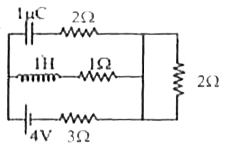In the organism, energy is stored in the form of
ATP
ADP
AMP
All the above.
The correct Answer is:A
To answer the question "In the organism, energy is stored in the form of," we will analyze the options provided: ATP, ADP, AMP, and all of the above.
1. Understanding the Terms:
- ATP (Adenosine Triphosphate): This molecule consists of an adenosine molecule bonded to three phosphate groups. It is known as the primary energy carrier in cells.
- ADP (Adenosine Diphosphate): This molecule consists of an adenosine molecule bonded to two phosphate groups. It is formed when ATP loses one phosphate group and releases energy.
- AMP (Adenosine Monophosphate): This molecule consists of an adenosine molecule bonded to one phosphate group. It is formed when ADP loses another phosphate group.
2. Energy Storage in ATP:
- ATP is known as the "energy currency" of the cell because it contains high-energy phosphate bonds. When these bonds are hydrolyzed (broken), a significant amount of energy is released, which can be used for various cellular processes.
3. Comparison of Energy Storage:
- ATP has two high-energy phosphate bonds, making it the most efficient form for energy storage.
- ADP has one high-energy bond, which means it stores less energy than ATP.
- AMP has no high-energy bonds, making it the least effective for energy storage.
4. Conclusion:
- Since ATP is the primary molecule used for energy storage in organisms due to its high-energy bonds, the correct answer to the question is ATP.
Final Answer:
In the organism, energy is stored in the form of ATP (Adenosine Triphosphate).
---
- ATP (Adenosine Triphosphate): This molecule consists of an adenosine molecule bonded to three phosphate groups. It is known as the primary energy carrier in cells.
- ADP (Adenosine Diphosphate): This molecule consists of an adenosine molecule bonded to two phosphate groups. It is formed when ATP loses one phosphate group and releases energy.
- AMP (Adenosine Monophosphate): This molecule consists of an adenosine molecule bonded to one phosphate group. It is formed when ADP loses another phosphate group.
- ATP is known as the "energy currency" of the cell because it contains high-energy phosphate bonds. When these bonds are hydrolyzed (broken), a significant amount of energy is released, which can be used for various cellular processes.
- ATP has two high-energy phosphate bonds, making it the most efficient form for energy storage.
- ADP has one high-energy bond, which means it stores less energy than ATP.
- AMP has no high-energy bonds, making it the least effective for energy storage.
- Since ATP is the primary molecule used for energy storage in organisms due to its high-energy bonds, the correct answer to the question is ATP.
In the organism, energy is stored in the form of ATP (Adenosine Triphosphate).
Topper's Solved these Questions
- BOOK - DINESH PUBLICATION ENGLISHCHAPTER - MOLECULES OF THE CELLEXERCISE - CYG43videos
MOLECULES OF THE CELL
- BOOK - DINESH PUBLICATION ENGLISHCHAPTER - MOLECULES OF THE CELLEXERCISE - CYG43videos
MOLECULES OF THE CELL
- BOOK - DINESH PUBLICATION ENGLISHCHAPTER - MICROBES IN HUMAN WELFAREEXERCISE - Brain Teasers-VIII60videos
MICROBES IN HUMAN WELFARE
- BOOK - DINESH PUBLICATION ENGLISHCHAPTER - MOLLUSCAEXERCISE - CYG10videos
MOLLUSCA
Similar Questions
Knowledge Check
- Question 1 - Select One
At the end of glycolysis, X is the net energy gain from one molecule of glycose via Y, but there is also energy stored in the form of Z. Identify X,Y and Z.
AXYZ1ATPOxidative phosphorylationNADH+H+BXYZ2ATPsOxidative phosphorylationNADH+H+CXYZ1ATPSubstrate level phosphorylationFADH2DXYZ2ATPsSubstrate level phosphorylationNADH+H+ - Question 2 - Select One
A living organism represents stored energy in the form of chemical compounds. When an organism dies, what happens to that stored energy ?
AAll chemicals immediately lose their high-energy bondsBAll molecules immediately degrade into basic elementsCAll energy immediately leaves, and that is one manifestation that the organism is deadDChemical compounds in cells lose their organisation over time because there is no longer an input of energy to maintain the organised state - Question 3 - Select One
Who provided the evidence that glucose is formed during photosynthesis and is then stored in the form of starch?
ASachsBEngelmannCvan NielDBlackmann
In red algae, food is stored in the form of
View SolutionThe energy stored in the condenser is
View SolutionIn the figure magnetic energy stored in the coil is
 View Solution
View SolutionThe energy in an electric cell is stored in the form of chemical energy. ____
View SolutionIn the steady state of the circuit shown in the figure the ratio of energy stored in the inductor to th energy stored in the capacitor is 1000000.
 View Solution
View Solution

